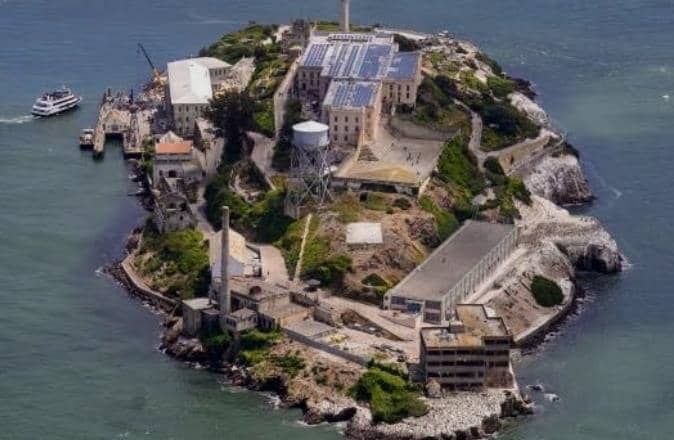JULIAN Roberts, the chief executive of Old Mutual plc (OML), is invited to challenge the following propositions before next month’s annual general meeting (AGM) of shareholders:
There has been huge destruction of shareholder value. This is shown by the fall in the share price (at its worst, by about 70 per cent in 52 weeks, on the announcement early last month of the results for the year to December); the share’s under performance against major indices, including the FTSE 100, and against peers Sanlam and Liberty on the JSE; the steep discount at which its bonds are traded; and the passing of its dividend.
The destruction has been caused by OML’s overambitious international strategy. The share and bond markets are saying precisely this. Roberts is implicitly saying so too, or OML wouldn’t be embarking on what he describes as a ‘simplification’ of its businesses outside South Africa. Integral to ‘simplification’ is the scaling down and closure, where possible, of those businesses. Over recent years, they have expunged substantial capital.
The pillars of OML are its operations in South Africa. These are wholly owned Old Mutual South Africa (Omsa), 55 per cent owned Nedbank and 74 per cent owned short-term insurer Mutual & Federal. Last year they contributed adjusted pretax operating profits of R7,9 billion, R5,3 billion and R872 million, respectively. This roughly equates to £940 million, whereas OML’s total adjusted operating profit (pretax and net of minority interests) was £727 million. OML without South Africa would have produced a loss.
Maximum value must be extracted from Omsa by OML to support its disastrous US Life business. OML has little alternative because US Life is not sufficiently large, like American International Group, to be rescued from failure by a US government bailout. So it must gamble on the timing of a sustained market recovery.
Only when policies of US Life and Bermuda (US Life offshore) mature can the size of the black hole, filled during the past year by a £314 million (R4,23 billion) injection into US Life, be finally determined. Until then, the unprofitable businesses are fed from capital reserves and subsidised by profitable businesses.
At the behest of OML, Omsa has already delivered R1 billion in ‘savings’. OML is looking for more. Thus does OML rely primarily on Omsa to top up its resources. This might hurt Omsa’s competitiveness. But it’s uncertain whether the South African regulator, treasury and exchange control authorities will allow transfers abroad of cash dividends from Omsa to OML in amounts that might be required.
VARIOUS OPTIONS
To list Omsa separately on the JSE is not a solution for OML. It would entail the entry to Omsa of South African minority shareholders and the formation of a South African board obliged to advance the interests of all Omsa shareholders, no longer OML alone. Although OML would presumably enjoy a once-off bonanza as the vendor of shares, its future dividend flow (capable of remittance abroad) would reduce.
On the other hand, a JSE listing for Omsa is a solution for Omsa. Even as controlling shareholder, the influence of OML will be restricted by the responsibility of the Omsa board being to Omsa only. Dividend policy, for instance, will be defined in the interests of all Omsa shareholders. Management remuneration will be reflected in bonuses that relate to the Omsa share price and not the OML share price.
Critically, this might well be the means to salvage the Omsa black empowerment consortiums. These empowerment schemes are deeply under water and more likely to drown because OML’s passing of its dividend negates their ability to service debt from a dividend.
The control of Omsa by South Africans could resolve other paradoxes. Prior to demutualisation in 1999, Old Mutual was owned by policyholders, who included many thousands of black individuals. After demutualisation, ownership passed to OML offshore. Thus was black empowerment mitigated. Moreover, local shareholders’ economic interest has been diluted by Omsa dividends going not to them but to the OML shareholder abroad, where they have been dissipated. The question, then, is whether Omsa can again become owned by shareholders representative of its client base.
FAILED STRATERGY
The cost of the OML head office is unjustifiable. As far as can be gleaned from OML presentations, the cost over the past two years has been at least £72 million, or almost R1 billion. Add to this figure last year’s directors’ emoluments of £4,55 million for two executive and two former executive directors, and eight non-executive directors and one former non-executive director, and it should be asked where value has been commensurate with cost. There is surely little handled by the OML head office in London that can’t be handled, at significantly lower cost, within the infrastructure of the Omsa head office in Cape Town.
The OML board should be restructured. Of its 10 directors, including the non-executive chairman, only two are South African. Both executive directors are non-South African. This is an imbalance because, 10 years after its London listing intended to pursue acquisitions abroad, the group remains reliant for its profits on South Africa. The international strategy has been turned on its head, from pursuit of acquisitions to conservation of capital and liquidity. Yet a board, collectively responsible for abortive acquisitions, remains in place to make the best of them.
The failed international strategy is being reversed. OML is selling out of Australia, exiting Portugal, ‘significantly’ scaling back in the Far East, where the Hong Kong office is being shut, and closing Bermuda to new business. As ongoing operations, it isn’t obvious why Skandia in Europe and asset management in the US aren’t self-standing – why they’re better served by OML direction. The original rationale for the group being ruled from London has collapsed.
It follows that control of Old Mutual should be returned to South Africa. Once this principle is accepted, the rest – what happens with the London listing, how South Africa can be separated from the businesses it subsidises, whether or when remaining offshore operations should be sold – become matters of detail. On the face of it, there’s nothing that can be done more cost effectively or efficiently in London than in Cape Town. The retention of OML now requires as much justification as the arguments that led to its establishment in the first place.
THE AGM
The public forum for shareholder concerns to be addressed is the AGM. Assume there are shareholders sufficiently concerned about OML that next month they attend its meeting to express their feelings.
But how does it go beyond feelings? Will any shareholders take the initiative to propose resolutions of their own, or will it be another ritualistic AGM where they perhaps go no further than voting against resolutions that the board is formally obliged to put before them? How will votes influence the board?
Under the circumstances, it’s hardly conceivable that there aren’t significant shareholders with serious concerns. Although they may privately engage with the board and can say what they want at the AGM, there may be constraints on them co-operating to agree and effect the changes they consider necessary.
For attempts to change the board, a precedent was possibly established by the Securities Regulation Panel (SRP) in its December 2003 ruling on JSE-listed Comparex. Having banded together, various institutional asset managers kicked out the board, in which they’d lost confidence. The Comparex directors were replaced by the institutions’ nominees.
The question was whether the institutions, whose combined shareholding exceeded 35 per cent, had acted in concert to take control of Comparex. If they had, they would have been obliged by JSE rules to offer minorities a buyout.
Recognising that the institutions represented a range of beneficial shareholders, such as retirement funds, the SRP differentiated between fully discretionary and partially discretionary voting mandates from beneficial shareholders.
On analysis of the institutional shareholdings and their mandates, the SRP ruled that the asset managers had not breached the 35 per cent threshold where an ‘affected transaction’ requires an offer to minorities.
‘Unless the various beneficial owners act in concert by virtue of an actual agreement, arrangement or understanding, there is no affected transaction,’ the SRP stated.
‘The person who can direct the exercise of the voting rights is the beneficial owner … the clients of the asset manager. Thus, unless the owner has given a fully discretionary mandate to the asset manager to vote the shares, it is the owner and not the asset manager who votes the shares.’
So institutional shareholders can put up resolutions and vote in their clients’ best interests, as in fully discretionary mandates, or as directed in terms of partially discretionary mandates. They can also collude, with an eye to the consequences should collusion cause them effectively to take control from an incumbent board.
In the present OML instance, there’s no indication at this stage that ‘an actual agreement, arrangement or understanding’ exists between institutional shareholders. To vote at the AGM, they don’t need it. To change the board, however, they probably do.
Presuming that there will be contentious resolutions, there’s the question of how asset managers in the Old Mutual stable will themselves vote.
-Business Report
Allan Greenblo is the editorial director of Today’s Trustee, a quarterly magazine primarily for trustees of retirement funds
Stay informed with The Namibian – your source for credible journalism. Get in-depth reporting and opinions for
only N$85 a month. Invest in journalism, invest in democracy –
Subscribe Now!










